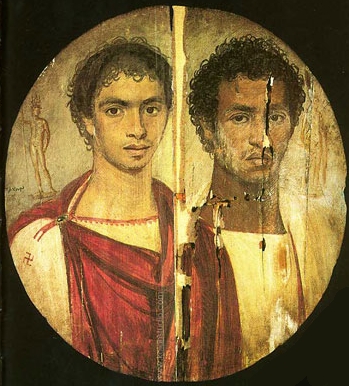I just read an interesting article on Tim Challies' blog
http://www.challies.com/archives/articles/quotes/the-puritans-and-sex.phpIf the Puritans, like the Reformers before them, had a positive attitude toward sex, how did the change in attitude come about?
I always found interesting to notice different views of modesty in different cultures, throughout the centuries and around the globe.
At the time of Augustine (IV-V century), Christians were baptized naked, in front of the whole congregation. Ancient Romans slept naked, and so did monks in most monastery. It was a V century Catholic saint, Benedetto da Norcia, who finally wrote in his rules that his monks should wear something in bed.
It was the medieval Catholic church that destroyed valuable Greek and Roman works of art in the name of modesty (it is said that the church destroyed more artwork than the barbarians).
It was during the Counter-Reformation that Pope Pius IV hired an artist to add some pants to Michelangelo's Last Judgment.
On the other hand, the Renaissance (and the Reformation) ushered in a renewed appreciation for the classics in all their forms.
In the XVI century, Olympia Morata, the subject of my historical novel, widely praised by her Reformed contemporaries for her knowledge and piety, translated two fables from one of the most irreverent and scandalous books of the XIII century (Boccaccio's Decameron) and quoted freely "poets of love" such as Catullus and Ovid in her correspondence with other Christians.
On the occasion of her wedding, she composed this prayer,
Wide ruling Lord, highest of all rulers,
Who formed the male and the female sex,
You who gave to the first man a wife for his own,
Lest the race of man die out,
and wished the souls of mortals to be the bride of Your Son
and that He die on behalf of His Spouse,
give happiness and harmony to husband and to wife,
for the ordinance, the marriage bed, and weddings are yours.
It's interesting that she mentions the marriage bed, while in our culture we are quite shy to include it in our conversations, and I doubt that we would pray for it in public!
When I first came to America from Europe, I noticed fewer people kissing in public. On the other hand, couples at church felt quite free to stroke each other's backs, sometimes for the whole length of the sermon, something that I have never seen in Italian churches!
My point? I don't know. I don't think blogs need to have a point, necessarily. I am just making an observation.
Or maybe, if we want to find a point, it is the same as in my previous post - the study of history widens our views.
This time, however, I am not adding a picture to the post...




